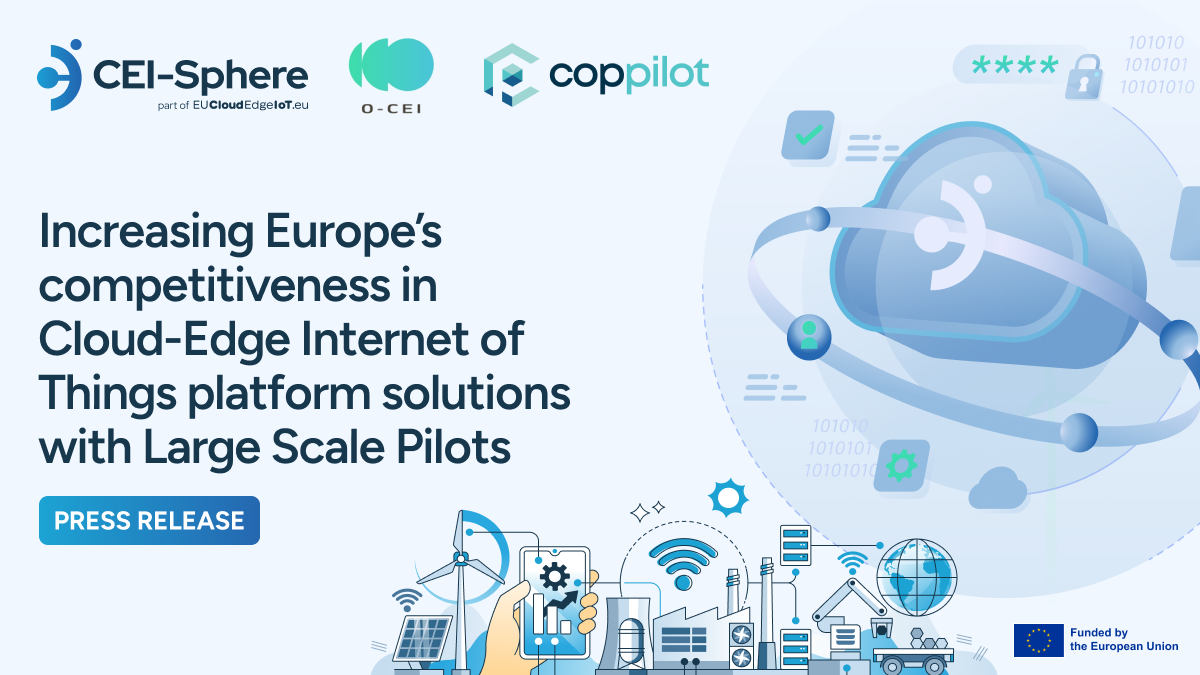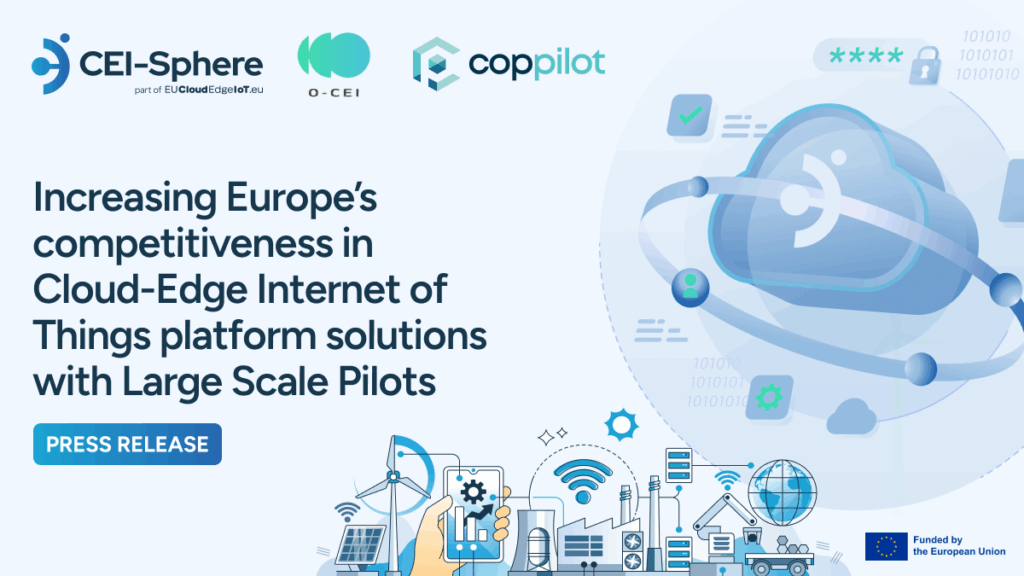Brussels, 15 April 2025 – Edge computing as an alternative to centralised cloud services, as underlined in the Draghi report, is emerging as a cornerstone for Europe’s industrial digitalisation. Data localisation at the edge will be key to Europe’s industrial digitalisation. With their strength in industrial and business applications, industrial IoT systems, and 5G, Europe has its one-time opportunity to bring its actors back to playing a significant role in the data economy, thereby improving its strategic autonomy and competitiveness.
Imagine manufacturing enterprises where real-time data analytics predict equipment failures before they occur. As the EU builds highly automated manufacturing plants requiring low latency and significant data volumes steered by AI, edge computing for industrial applications could better enable performance and reduce latency for industrial connected robotics, keeping data transfers more secure. These advancements are materialising through the integration of Cloud, Edge, and Internet of Things (IoT) technologies, as well as the introduction of Artificial Intelligence (AI). The convergence of Cloud, Edge, and IoT (CEI) creates a seamless network where data collected by IoT devices is processed, stored or analysed along the path between the edge and the cloud. Integrating AI into this continuum significantly amplifies its smart capabilities, such as predictive maintenance or personalisation. Building on the foundational efforts of the EUCloudEdgeIoT initiative started in 2022, the EU has recently funded new projects under the Horizon Europe programme, dedicated to increasing innovation and collaboration in the CEI continuum. These pilots on IoT platforms and decentralised (edge) intelligence target breakthrough initiatives to revolutionise the use of edge paradigms and technologies in real-world environments in areas like electromobility, software-defined vehicles, logistics, smart agriculture and agri-food, smart urban environments and multiple electricity grids management. The cross-domain approach of the initiative is fully supporting a joint roadmap for decarbonisation and competitiveness as identified by the Competitiveness Compass. By establishing best practices, the initiative seeks to accelerate the adoption and integration of clean energy technologies, such as electric vehicles (EV) chargers, heat pumps, solar panels, and residential batteries, through open IoT platforms and European CEI solutions. These efforts contribute to strengthening Europe’s competitiveness and strategic autonomy while driving the transition to a sustainable future for key industrial sectors. The development of an open platform and European CEI technologies is instrumental in enhancing Europe’s competitiveness and strategic autonomy in this sector, recognising the global significance of open CEI. To this end, partners of the funded pilots will collectively develop solutions to link energy and European transport, for developing sustainable solutions in logistics, smart buildings, operation of ports and farm2fork systems. These efforts aim to foster consensus on interoperability and standards of distributed IoT-edge solutions bridging traditionally siloed domains. In particular, the EU-funded pilots will test cutting-edge solutions to drive cross-domain standards for flexible energy solutions by orchestrating cross-domain data sharing, minimising energy footprint, and promoting open standards for virtualisation and interoperability.
THE LARGE-SCALE PILOTS
Supported by the Coordination and Support Action CEI-Sphere, two major CEI Large Scale Pilots (LSPs) have been funded, O-CEI and COP-PILOT.
The O-CEI project brings together 58 partners from 20 countries and aims to develop an open, interoperable, and sustainable platform, addressing key challenges in decentralised CEI networks, such as rising energy consumption, costs and carbon emissions.
Backed by over 20M€ of EU funding, O-CEI aims to imprint innovation in digital technologies across sectors relying on renewable energy sources in alignment with EU Strategies.
The project is implementing eight large-scale pilots across various sectors. These include optimising electricity grids with renewable energy integration, advancing software-defined vehicles, enhancing smart charging for electric postal fleets, and improving energy management in maritime ports. Additionally, the project focuses on sustainable dairy production, increasing efficiency in e-tractor operations for large-scale kiwi crops, deploying private 5G networks to enhance electric vehicle charging, and fostering social acceptance of energy flexibility in urban areas.
“O-CEI is dedicated to shaping an open, secure, and interoperable CEI platform that accelerates innovation and fosters a resilient digital future. By engaging key industries across six strategic verticals, we are laying the groundwork for scalable, energy-efficient solutions that drive sustainability and growth. Our collaboration with CEI-Sphere is instrumental in advancing these goals, with our first steps already taken through the jointly organised ‘Workshop on Digital ID Management and Data Governance.’ We look forward to further strengthening our partnership to drive the evolution of Europe’s Cloud-Edge-IoT ecosystems.”
Prof. Carlos Palau, O-CEI Coordinator
On the other hand, COP-PILOT and its consortium of 45 partners will create a Collaborative Open Platform (COP) that is standards-aligned and market-oriented, enabling end-to-end orchestration across service domains.
Activities are organised into four piloting clusters related to emerging vertical sectors, such as Industry (mining, manufacturing, recycling), Smart buildings/Smart city, Agriculture, and Energy Management, with cross-sector scenarios focusing on mobility and logistics. Each piloting cluster is composed of several piloting use cases that capture key sector processes as well as the interactions across sectors. This structure is designed to showcase enhanced industrial cooperation, cross-sector applications, supply chain interactions, and the practical use of the platform framework across all clusters. COP-PILOT plans to develop an architectural framework that will facilitate the different needs of these pilots.
At each site, COP-PILOT services will manage data flows to applications and repositories while software components will enable configuration and resource orchestration across different infrastructures. Finally, COP-PILOT platform services will provide end-to-end service orchestration across geo-distributed domains.
“As we step into a new era of industrial innovation powered by AI, automation, and seamless connectivity, COP-PILOT is committed to fostering a collaborative platform that drives interoperability and transformative impact service domains. We highly appreciate CEI-Sphere’s collaboration and guidance in aligning our efforts with broader goals. Their expertise in standardisation, interoperability, and certification will be instrumental in ensuring that COP-PILOT achieves its vision of a cohesive, standards-aligned computing environment that evolves with market demands.”
Ioanna Drigkopoulou, COP-PILOT Coordinator

Project representatives at the workshop ‘Advancing Cross-Domain Standardisation for IoT and Edge and Edge Computing’, held in Brussels
CEI-Sphere works with the LSPs and European industry players to translate use cases into business models, promoting replicability and scalability of the developed solutions.
“The investment in the CEI LSPs presents a massive market opportunity. The future competitiveness of European industry and the mass adoption of AI-driven solutions that are responsible for decarbonising our energy through flexibility and transforming our manufacturing models rely on a strong, secure and diverse digital CEI ecosystem. This can only be achieved by delivering market value and making an unavoidable investment case for companies to build on the EU CEI.” Tanya Suárez, CEI-Sphere Coordinator
CEI-Sphere supports the LSPs by mapping pilots and actors, developing a use-case catalogue, promoting interoperability through a defined Minimum Interoperability Mechanisms (MiMs) approach. It also supports the development of secure and compliant CEI systems.
To maintain market focus, CEI-Sphere will engage networks of industry actors surrounding the LSPs through events like Hackathons and conferences, and through its CEI Tech Backbone Toolkit. To maintain the quality, security, and interoperability of cloud-edge infrastructures throughout Europe and promote the adoption of these diverse and complex systems, CEI-Sphere will work towards a trust label framework.
Contacts: ceisphere@trust-itservices.com | https://ceisphere.eu/



